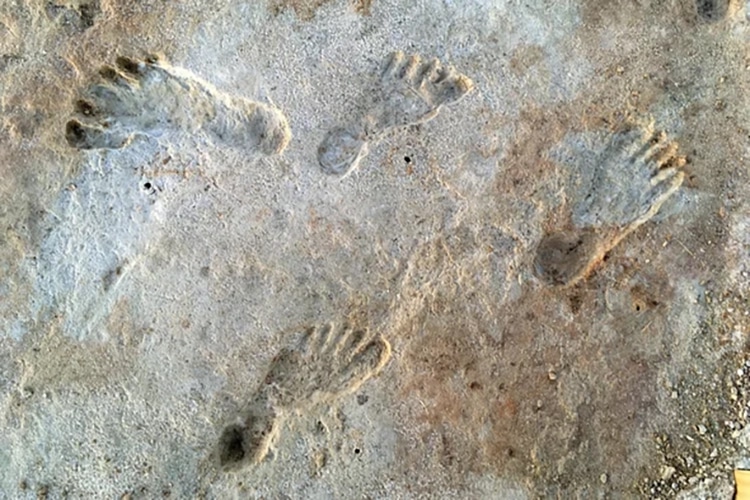
Photo: National Park Service
The longstanding theory is that humans arrived in the Americas about 16,000 years ago. They migrated down the Pacific Coast after crossing the Bering Strait on a land bridge that once existed. They may have then used boats to sail down the coast around glaciers which were still extant as the last Ice Age wound down. This timeline is considered by many to be the logical conclusion from existing archeological sites and the sheer amount of ice that would have existed prior to this period. However, a paper two years ago used carbon dating to rewrite this timeline according to sets of ancient footprints at White Sands National Park in New Mexico. Their bold, controversial claims were recently bolstered with additional testing, suggesting that the footprints are an impressive 23,000 and 21,000 years old. This puts into question when humans arrived in the Americas.
The footprints are visible and distinct, stamped into what was once mud on an ancient lakeshore in present day New Mexico. Frozen into stone by layering sediment, the first testing aimed at establishing the age of the prints through carbon dating. As footprints are not organic material, the scientists used seeds from a lake plant called Ruppia cirrhosa. The seeds were found in the surrounding layers of sediment around the prints. Testing of the seeds suggested a date range of about 23,000 to 21,000 years ago. However, these initial findings caused some doubt among scientists, especially given its radical revision of known migrations. Loren Davis, an archaeologist at Oregon State University who was not involved in the research, expressed concern to Science that older carbon-14 in the lake water could have been absorbed into the plants which produced the seeds.
To help settle these concerns, the researchers have now added two new dating methods that both agree with their former findings. They took pollen samples from the surrounding sediment layers and found that carbon dating once again agreed with the seeds. The pollen would not have imbibed carbon because the trees grew on land. Quartz grains were also collected and tested by optically stimulated luminescence (OSL) dating. The results showed that these stone bits were last exposed to light 21,400 and 18,000 years ago. Despite this impressive corroboration, some scientists still think erosion may have moved older sediment on top of the prints. Even so, the newfound evidence certainly suggests that 16,000 years ago humans may have already been in North America. Hopefully, further testing will bring more answers to light.
These footprints at White Sands National Park in New Mexico are now thought to be 23,000 and 21,000 years old, over 5,000 years before humans were previously thought to have roamed the Americas.

Photo: National Park Service
h/t: [Science.org, Scientific American]
Related Articles:
Art History: Ancient Practice of Textile Art and How It Continues to Reinvent Itself
Sister Duo Weaves Textured Wall Hangings Inspired by Australian Landscapes
How to Crochet: Learn the Basics of This Time Honored Handicraft
Artist Fills Forest with Life-Size Sculptures Made from Woven Rods of Willow
